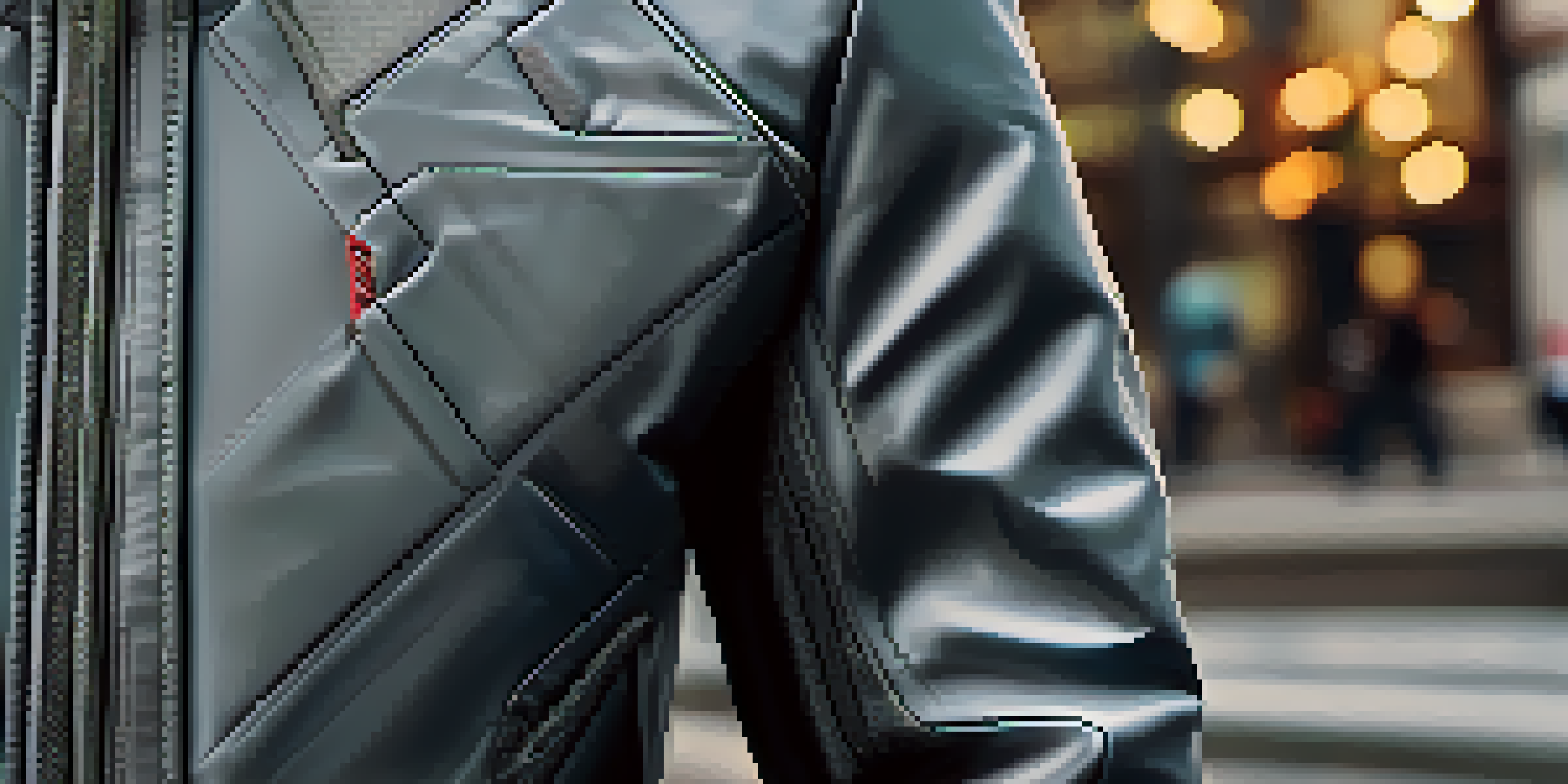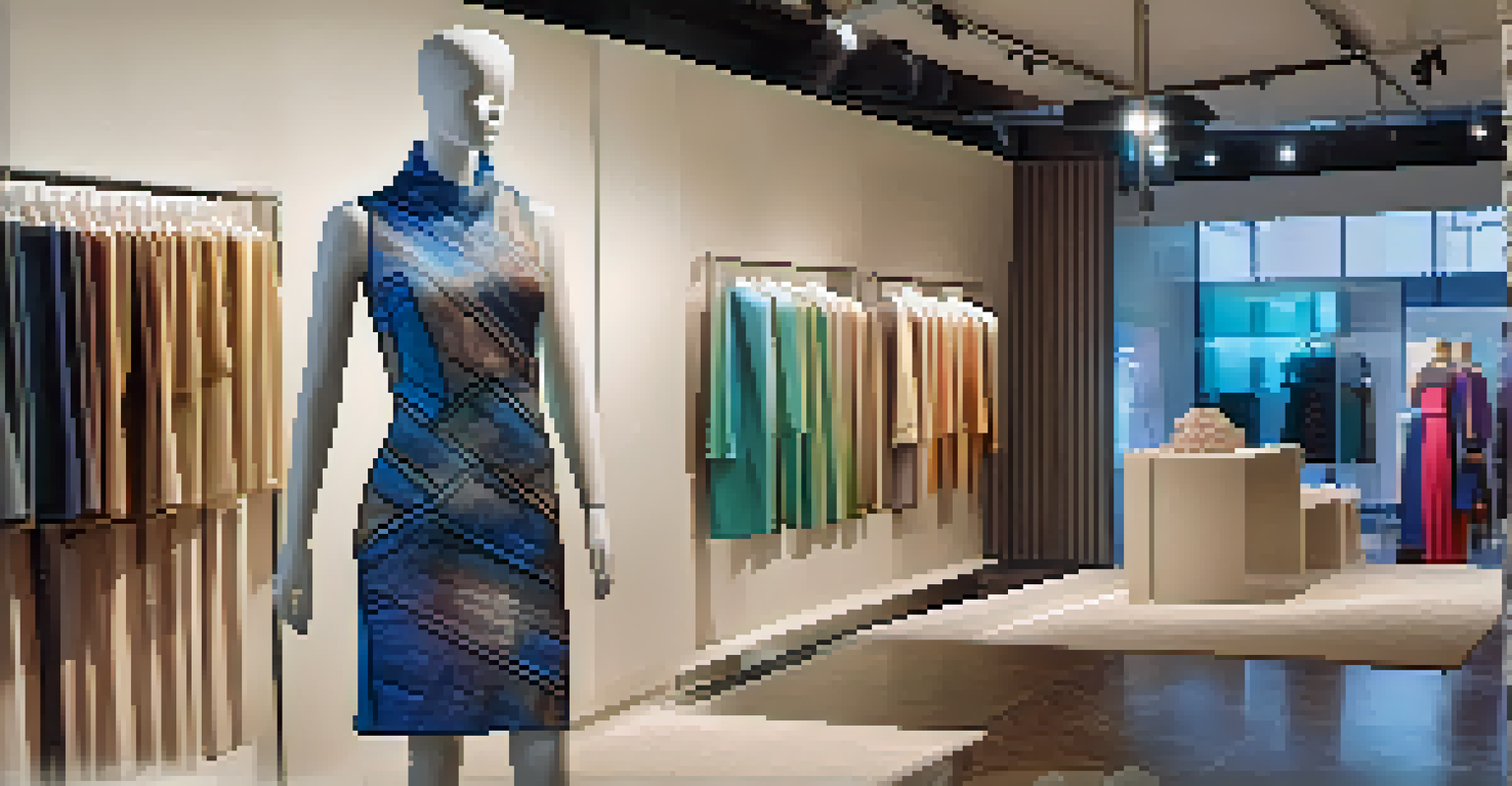Smart Textiles: Revolutionizing Everyday Fashion Choices Today

What Are Smart Textiles and How Do They Work?
Smart textiles, also known as e-textiles, are fabrics embedded with technology that can perform various functions. Imagine a shirt that can monitor your heart rate or a jacket that adjusts its temperature based on the weather. These textiles blend traditional fabric with sensors and electronics, creating a new category of clothing that enhances our daily lives.
Fashion is the armor to survive the reality of everyday life.
The technology behind smart textiles is fascinating. Essentially, they can sense, respond, and even communicate with other devices. For example, a smart fabric can measure your body temperature and send that data to an app on your smartphone, allowing you to track your health in real-time.
As we continue to innovate, the potential applications of smart textiles are limitless. From sportswear that improves athletic performance to fashion that changes color based on your mood, these textiles are not just functional—they're also an exciting glimpse into the future of fashion.
The Benefits of Smart Textiles in Daily Life
Smart textiles offer numerous advantages that enhance our everyday experiences. One of the most notable benefits is their ability to monitor health metrics, which can be particularly beneficial for athletes or individuals with medical conditions. Picture being able to track your activity levels and heart rate without wearing a bulky device—it's all seamlessly integrated into your clothing.

In addition to health monitoring, smart textiles can improve comfort. For instance, fabrics that regulate temperature can keep you warm in the winter and cool in the summer, making your clothing more adaptive to your environment. Imagine wearing a jacket that can keep you cozy on a chilly day but feels light and breathable when the sun comes out.
Smart Textiles Enhance Everyday Life
These innovative fabrics can monitor health, adjust to temperature changes, and offer durability for a more functional wardrobe.
Moreover, these textiles are often designed to be more durable and resistant to wear and tear. This means you can enjoy stylish, functional clothing without worrying about constant replacements, ultimately saving you money in the long run.
Smart Textiles in Athletic Wear: A Game Changer
Athletic wear is one of the most exciting areas where smart textiles are making waves. Imagine running a marathon in a shirt that tracks your performance metrics, like heart rate and pace, directly to your smartwatch. This integration allows athletes to optimize their training and improve their performance in real-time.
Sustainability is no longer about doing less harm. It's about doing more good.
These smart fabrics can also enhance recovery after workouts. Some textiles are designed with compression technology that supports muscle recovery by improving blood circulation. This means that after an intense workout, you can wear clothing that not only looks good but also helps your body heal faster.
As more athletes leverage these technologies, we're seeing a shift in how we approach fitness. Smart textiles empower individuals to take control of their health and performance, making exercise more effective and enjoyable.
Fashion Meets Function: The Style of Smart Textiles
Gone are the days when technology in clothing meant sacrificing style. Today, designers are creating smart textiles that are not only functional but also fashionable. Think of a sleek jacket that can charge your phone or a dress that changes colors with the press of a button—it's all about marrying aesthetics with advanced technology.
Fashion brands are recognizing consumer demand for both beauty and functionality. Collaborations between tech companies and fashion designers are leading to innovative collections that catch the eye while offering practical benefits. This shift is encouraging consumers to rethink their fashion choices and embrace the possibilities of smart clothing.
Athletic Wear Revolutionized by Tech
Smart textiles in athletic clothing provide real-time performance tracking and aid in muscle recovery, transforming fitness routines.
As designers continue to experiment with these textiles, we can expect to see more unique styles and features that cater to the diverse tastes of fashion enthusiasts. The future of fashion is bright, and it's wrapped in technology.
Environmental Impact: Sustainability and Smart Textiles
Sustainability is a growing concern in the fashion industry, and smart textiles can play a significant role in addressing this issue. Many smart fabrics are designed to be more durable, meaning they last longer than traditional textiles and reduce the need for frequent replacements. This aspect alone can help lessen the fashion industry's carbon footprint.
Additionally, some smart textiles are made from recycled materials or are designed to be biodegradable. This focus on sustainability not only appeals to environmentally conscious consumers but also paves the way for a more responsible fashion industry. Imagine wearing clothing that not only looks good but is also good for the planet.
As technology continues to evolve, we can expect even more innovations that prioritize sustainability. This means that future smart textiles could lead to a more eco-friendly approach to fashion, combining style and environmental responsibility in a way that benefits everyone.
Challenges and Limitations of Smart Textiles
Despite the many benefits, smart textiles also face challenges that need addressing. One major concern is the cost of production, which can make these innovative garments more expensive than traditional clothing. For consumers, this can be a barrier to entry, limiting access to the advantages smart textiles offer.
Another challenge is the durability of the technology embedded in the fabrics. While many smart textiles are designed to withstand regular use, the electronics may wear out over time or become less effective after repeated washes. This raises questions about the longevity of these products and whether they can truly replace conventional clothing.
Sustainable Fashion with Smart Textiles
Many smart fabrics are designed to be more durable and eco-friendly, helping to reduce the fashion industry's environmental impact.
Lastly, there are privacy concerns surrounding data collection from smart textiles. As these fabrics often track personal information, consumers must be aware of how their data is used and stored. Addressing these challenges is crucial to ensure that smart textiles can thrive in the consumer market.
The Future of Smart Textiles in Everyday Fashion
As technology continues to advance, the future of smart textiles looks promising. We can anticipate even more innovative applications that will transform how we think about clothing. Imagine garments that can monitor your mood and adjust their colors accordingly or fabrics that can change their texture based on your preferences.
Moreover, as awareness of smart textiles grows, we might see wider adoption across different demographics. This could lead to more affordable options that cater to various tastes and needs. The everyday consumer may soon find themselves surrounded by clothing that not only looks good but also actively contributes to their well-being.

Ultimately, the integration of smart textiles into our daily lives represents a significant shift in the fashion landscape. As these technologies become more commonplace, it's clear that our clothing will not just be about style, but also about enhancing our everyday experiences.